In this NewsFlash from the Naked Scientists, news of a novel way to neutralise HIV, researchers uncover how brains gauge the passage of time, and agriculture on the microscale: scientists have found the world's smallest farmers, they're just one cell wide. Plus, how a contagious tumor repairs itself by stealing genetic material from it's host.
In this episode

00:23 - How time flies
How time flies
A new study this week has found that, in order to keep track of time, our minds exploit as many clues in the environment as they can get hold of. This means that our internal clock isn't solely controlled by pre-programmed cells in the brain...
Researchers from University College London have shown that some of our perception of time is governed by observing how much the world changes. The researchers also think that through life we have learned that things in the environment change at an 'average' rate. So if we compare the changes we see to the changes we expect, our minds can estimate how much time has passed.
Publishing in Current Biology, the researchers used two experiments to test their theory. For the first, twenty participants observed blobs of projected light appear twice. They were then asked which appearance lasted the longest. The light blobs were then projected alongside a mottled pattern which was programmed to change randomly, but at a regular average rate. This addition actually improved the participants' time judgements - which suggests that their brains used the rate at which the patterns changed in order to construct an internal time reference.
For the second experiment the authors varied the rates at which the patterns changed and then asked the subjects to judge how long the mottled patterns lasted. When the patterns changed faster, the test subjects thought they had lasted for longer, demonstrating that a change in sensory input can alter our sense of time.
Maneesh Sahani, who led the research, believes that because of the various types of sensory input and analysis that go into this timekeeping, there may be no single area in the brain responsible for it.
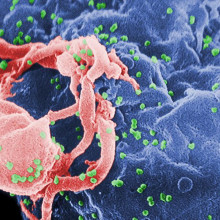
02:34 - RNA-away HIV
RNA-away HIV
A mouse given a human immune system has enabled scientists to take the first steps in testing a new treatment for HIV, the immune-disabling agent that causes AIDS.
Currently, HIV-infected individuals are managed using a strategy called HAART - highly active anti-retroviral therapy - which involves the simultaneous combined use of several drugs that target different components of the virus lifecycle. And whilst this approach has been very successful, helping many patients to maintain good health, the drugs themselves often have significant side-effects making them hard to tolerate for some patients, and the gradual emergence of resistance still remains a problem. But recently scientists have found another way to disable the virus, using short pieces of genetic material.
One approach is to design short sequences of nucleic acid called siRNAs - small interfering RNAs - which are the genetic mirror image of certain essential viral or host genes. When these siRNAs enter infected cells they "cancel out" their target gene, preventing the virus from reproducing.
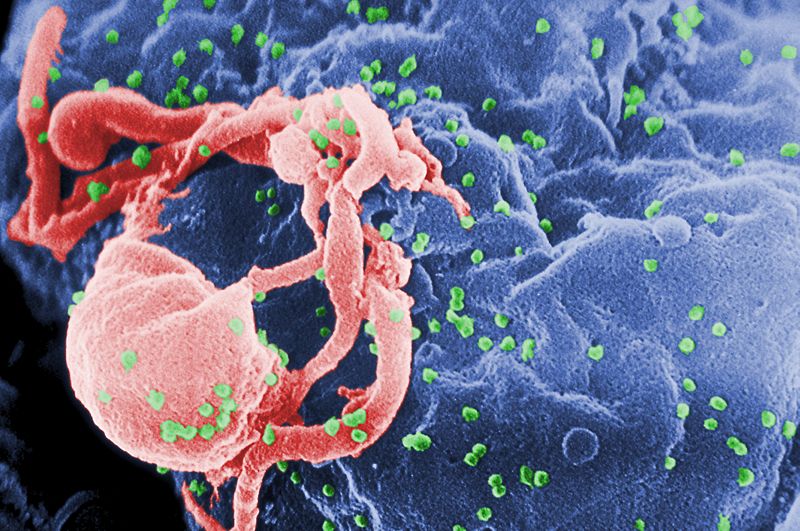 Effective though it is, a significant problem is delivering sufficient quantities of these so-called functional RNAs into virally-infected cells in the first place.
Effective though it is, a significant problem is delivering sufficient quantities of these so-called functional RNAs into virally-infected cells in the first place.
Now Colorado State University scientist Charles Neff and his colleagues, writing in Science Translational Medicine, have solved the problem by using another short piece of genetic material, this one known as an aptamer. These are molecules of RNA selected on the basis of their ability to fold into a certain shape so they lock tightly onto a target structures.
The Colorado team have developed on of these aptamers to recognise an HIV protein called gp120, which the virus uses to infect susceptible immune cells. Alone, and when tested on cultured cells in a petri dish, this aptamer is very effective at neutralising HIV.
But the team have now gone a step further. By coupling their aptamer, which they call A-1, to an siRNA molecule that targets two key HIV genes, they've found they can simultaneously deliver the small interfering RNA selectively to infected cells and with very high efficiency, whilst also directly neutralising viral particles using the aptamer.
They tested this chimaeric molecule - called Ch A-1 - in mice that had been treated with human stem cells so that they make human white blood cells and can be infected with HIV. Compared with untreated control animals that maintained very high levels of circulating HIV and showed a 50% decline in CD4 white blood cells over an 18 week period, those receiving the new treatment rapidly developed an undetectable viral load in the bloodstream and maintained a normal CD4 count.
The team checked these animals for signs of viral mutations that might lead to resistance to the new agent, but did not detect any consistent or reproducible dominant mutations.
This suggests that this strategy could provide doctors with a potent new weapon with which to combat HIV, including HIV that has become resistant to existing therapies. The next step, say the researchers, will be to translate the treatment to a human clinical trial to assess its efficacy in real patients.
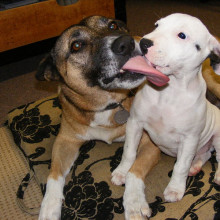
06:36 - Contagious canine tumours steal host cell spare parts
Contagious canine tumours steal host cell spare parts
Dr Clare Rebbeck, Imperial College
Also in the news this week, researchers at Imperial College London have discovered an unusual process which is happening in a contagious form of cancer that infects dogs. Canine transmissible venereal tumour, or CTVT as it's known, is spread by mating and it can also be transmitted by licking, biting, or sniffing tumour affected areas. The tumour cells then move from one animal to another and they establish a new tumour. But what this new study has revealed is that the cancer cells keep themselves healthy by stealing key cellular spare parts from the host animal. If the same is true of human cancers, it could hold the key to a host of new treatments for the disease and to tell us a bit more, we're joined by Dr. Clare Rebbeck, formerly from Imperial College, she's now at Cold Spring Harbour in the USA, and she's with us. Hello, Clare.
Clare - Hi.
Chris - Welcome to the Naked Scientists. First of all, can you tell us a bit more about the biology of this tumour, this canine transmissible venereal tumour?
Clare - So this tumour is actually very interesting. It's one of only two types of tumour currently known that can be passed on from one individual to another and actually grows like a skin graft. With the dogs, it's able to go to any type of breed of dogs and can also actually be passed on to some of the wolf population as well. So, somehow it invades the immune system so the dog is not able to recognize that it's not part of itself and therefore, it doesn't reject the tumour until it grows.

Chris - What was the specific question that you were looking to solve with the present study, Clare?
Clare - So for this present study, we're trying to actually find more information about how the tumours were related to each other and trying to estimate some more information on the age of the tumour. We have actually done a previous study which tried to calculate how old the common ancestor of all the tumours that we collected were, so we actually collected tumours from seven countries in this particular study. On the previous study, we found that all the tumours from these countries all came from a single origin and that this was approximately only about 500 or 600 years ago. We were trying to use the mitochondrial genome for this present study which is another region in the cell which provides genetic information to provide more information about how old the tumour is.
Chris - So you've got lots of samples of these tumours distributed from various places and you got DNA out of them and specifically DNA from these mitochondria, the little organelles in cells that give cells their energy, but which carry their own DNA so they're useful as a marker. So how did you then study their mitochondrial DNA? What were you looking for?
Clare - So we're looking for mutations in the DNA. Over time, mutations arise and you can actually measure these mutations and they provide information on how closely related one tumour is to another, and also, how long it's been since these tumours have been separated, based on the number of mutations that have arisen between the tumours.
Chris - And if you compare the numbers of mutations in just the DNA of the tumour, the normal cellular DNA, and the rate at which mutations are cropping up in this mitochondrial DNA, you'd expect them to be the same, were they?
Clare - Well actually, they're not always the same. Certain regions in the nuclear genome, which is the area of the genome which most people are familiar with, will mutate much more rapidly. There's also regions which code for genes and these tend to mutate at a much slower rate. So we have actually looked at the rapidly mutating regions and found the result from these, about their common ancestor and provide an estimate of their age for this. The mitochondrial region, or the mitochondrial DNA also has regions which mutates quickly and slowly. So we actually use both of these regions to help us with the answer that we were looking for, but in both of these regions, the results that we found, we didn't expect them based on their...
Chris - Why not? What was wrong?
Clare - We expected there to be not so many mutations in either region, either the fast or the slowly evolving regions. But we found actually, there was much more variation between the tumours than we expected..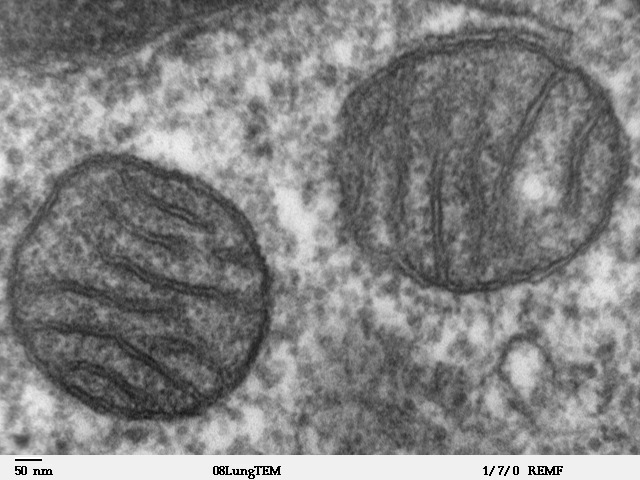
Chris - And how do you account for that? What do you think is going on?
Clare - Well we think therefore that the mitochondrial genome is actually not part of the tumour per se. I mean, it hasn't come from a single origin, so we suspected then that the tumour has somehow been able to take up the mitochondrial DNAs from a different source which we suspect would be one of the host dogs, that it had grown on in some point in the past.
Chris - Do you think it's taking up just the DNA of mitochondria from adjacent host cells or do you think it's scooping up entire mitochondria and bringing them in to the tumour cells to keep them healthy?
Clare - So that's a good question and we're not entirely sure about that. We suspect that it's actually taking up the whole mitochondria and so the whole organelle. We think this because the original type of cell that this tumour came from acts as some sort of immune cell. So it's able to engulf foreign matter. So this type of cell, we suspect may then have the ability to engulf the mitochondria itself.
Chris - If this is true, if it is taking up mitochondria on block like this and incorporate them into itself, does this mean the same could happen in any human tumour and this could be one of the reasons why cancers grow so successfully despite being genetically highly disorganized in humans and other animals?
Clare - I think probably not because the need for it to take up the new mitochondria is mainly a result of the fact that the tumour is so ancient. In a normal person, their cancer is only as old as the person itself, so the number of mutations may not be sufficient, in order for it to require a new input. However, this may happen sometimes but it would be very difficult to be able to detect.
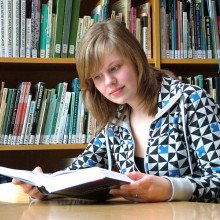
12:38 - Getting tested is better for studying than concept mapping
Getting tested is better for studying than concept mapping
Researchers this week have found that, for fact-based subjects, practising a retrieval exercise produces better test results than concept mapping.
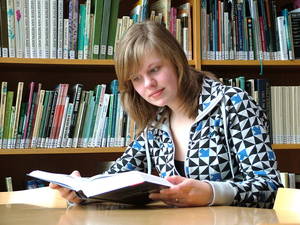 Based at the Purdue University, Jeffrey Karpicke and Janell Blunt ran several tests on 120 college students in the U.S. In their experiment, they had students create a concept map from a set text and then the tested the students on what they had learned. A concept map, for those that don't know, is a sort of spider diagram with lots of lines linking up ideas and facts. The concept map was actually developed in the 70s by Joseph Novak and quite a few institutions now encourage its use.
Based at the Purdue University, Jeffrey Karpicke and Janell Blunt ran several tests on 120 college students in the U.S. In their experiment, they had students create a concept map from a set text and then the tested the students on what they had learned. A concept map, for those that don't know, is a sort of spider diagram with lots of lines linking up ideas and facts. The concept map was actually developed in the 70s by Joseph Novak and quite a few institutions now encourage its use.
The researchers then had the students complete a sort of reading comprehension or 'retrieval exercise' on the text and then tested them on what they'd learned. So the students were essentially being tested on the test and then tested again. What they found was that students performed better on the retrieval exercise than they did on the mind mapping exercise. What's more, they retained the knowledge for longer if they learned using retrieval.
Publishing in Science, the researchers claim that it's both the act of recall and the act of reconstructing knowledge that are key for learning. But if you're still a huge fanatic of concept mapping you could, of course, combine the two by creating a mind map from memory. So if you want to do well in exams, just make sure you test yourself!
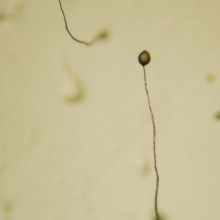
14:25 - World's smallest farmers: just a single cell
World's smallest farmers: just a single cell
There are many examples of organisms engaging in agriculture in the natural world, ranging from humans that grow wheat to leaf-cutting ants that nurture edible forms of fungi. But now scientists have discovered what is possibly the smallest of nature's farmers - a single-celled social amoebal species called Dictyostelium discoideum.
These microscopic soil-dwellers engulf and consume bacteria, multiplying in the process. But when food becomes scarce, Rice University researcher Debra Brock has discovered, they do something very interesting - about one third of the amoebae prepare a packed lunch.
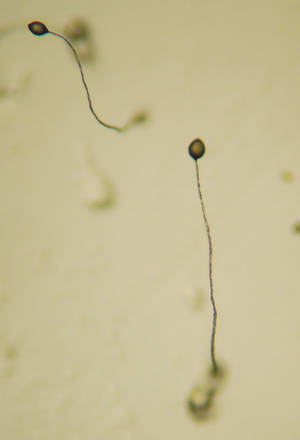 So, rather than exhaust the supply of bacterial food locally, they forego finishing their meal to instead sequester inside themselves some of the microbes they have been consuming. They then join up with other fellow amoebae to form a migratory multi-celled "slug" that moves up through the soil in search of pastures new. Close to the surface, the slug-like structure then produces fruiting bodies, called sori, which contain amoebal spores - complete with pre-packaged bacteria - that can be disseminated to colonise a new terrain. And when the bacterially-equipped amoebae emerge from their spores, the bacteria are used to "seed" new microbial colonies that can be consumed subsequently.
So, rather than exhaust the supply of bacterial food locally, they forego finishing their meal to instead sequester inside themselves some of the microbes they have been consuming. They then join up with other fellow amoebae to form a migratory multi-celled "slug" that moves up through the soil in search of pastures new. Close to the surface, the slug-like structure then produces fruiting bodies, called sori, which contain amoebal spores - complete with pre-packaged bacteria - that can be disseminated to colonise a new terrain. And when the bacterially-equipped amoebae emerge from their spores, the bacteria are used to "seed" new microbial colonies that can be consumed subsequently.
What's intriguing is that only a fraction (36%) of the amoebae behave as "farmers" like this. The trait does appear to be genetic, because if mixtures of amoebae including both farmers and non-farmers are given a dose of antibiotics to sterilise them of any bacteria they may be carrying, those identified as farmers previously then pick up fresh stocks of bacteria.
Now it remains to identify the genes that underpin this interesting behaviour, which may lead to a better understanding of how bacterial and other cells interact, including in a number of important diseases such as TB where carriage of bacteria within cells is a critical step in the pathological process.
Related Content
- Previous Why does light bend under gravity?
- Next Analysing Antimatter










Comments
Add a comment